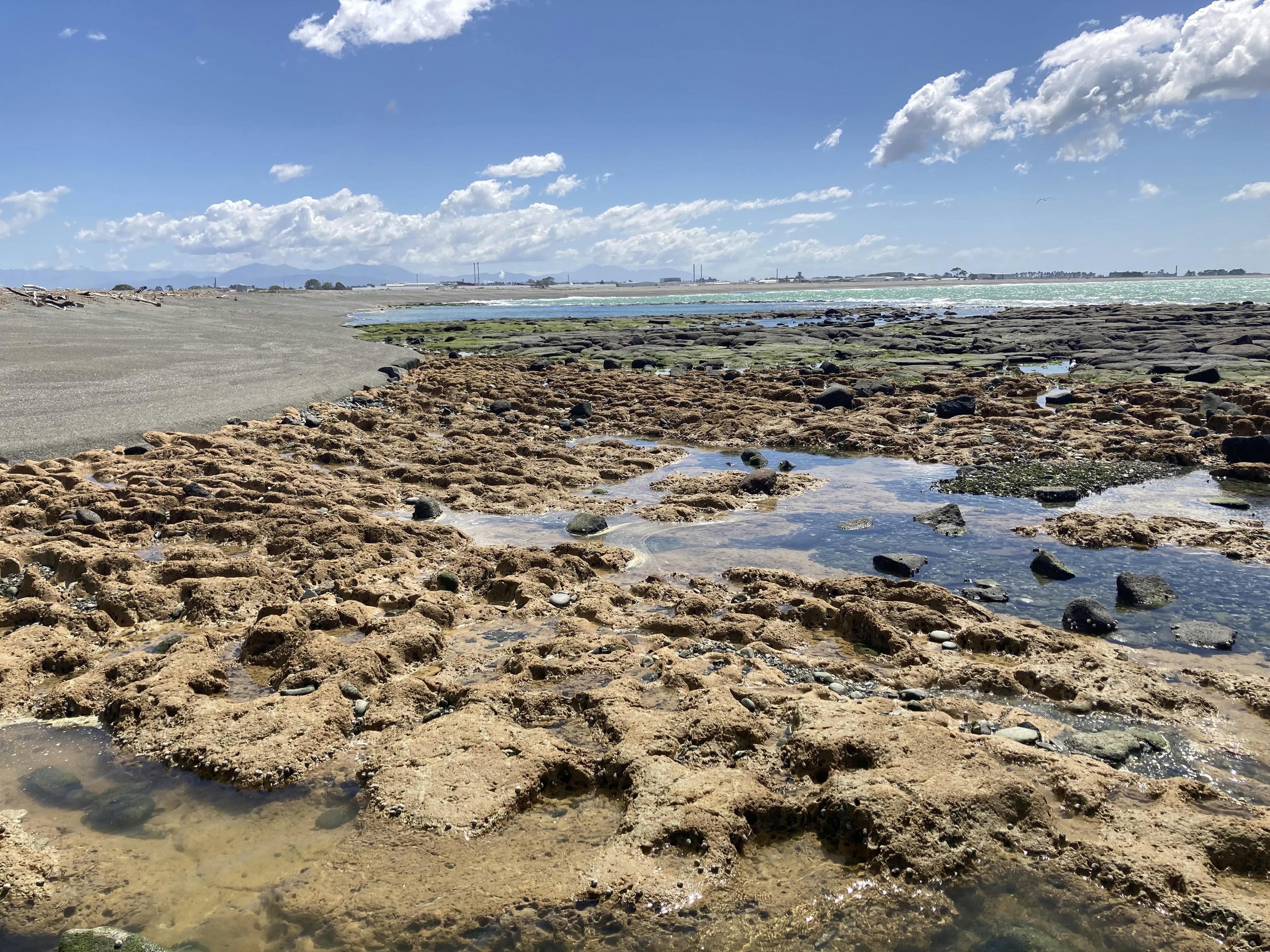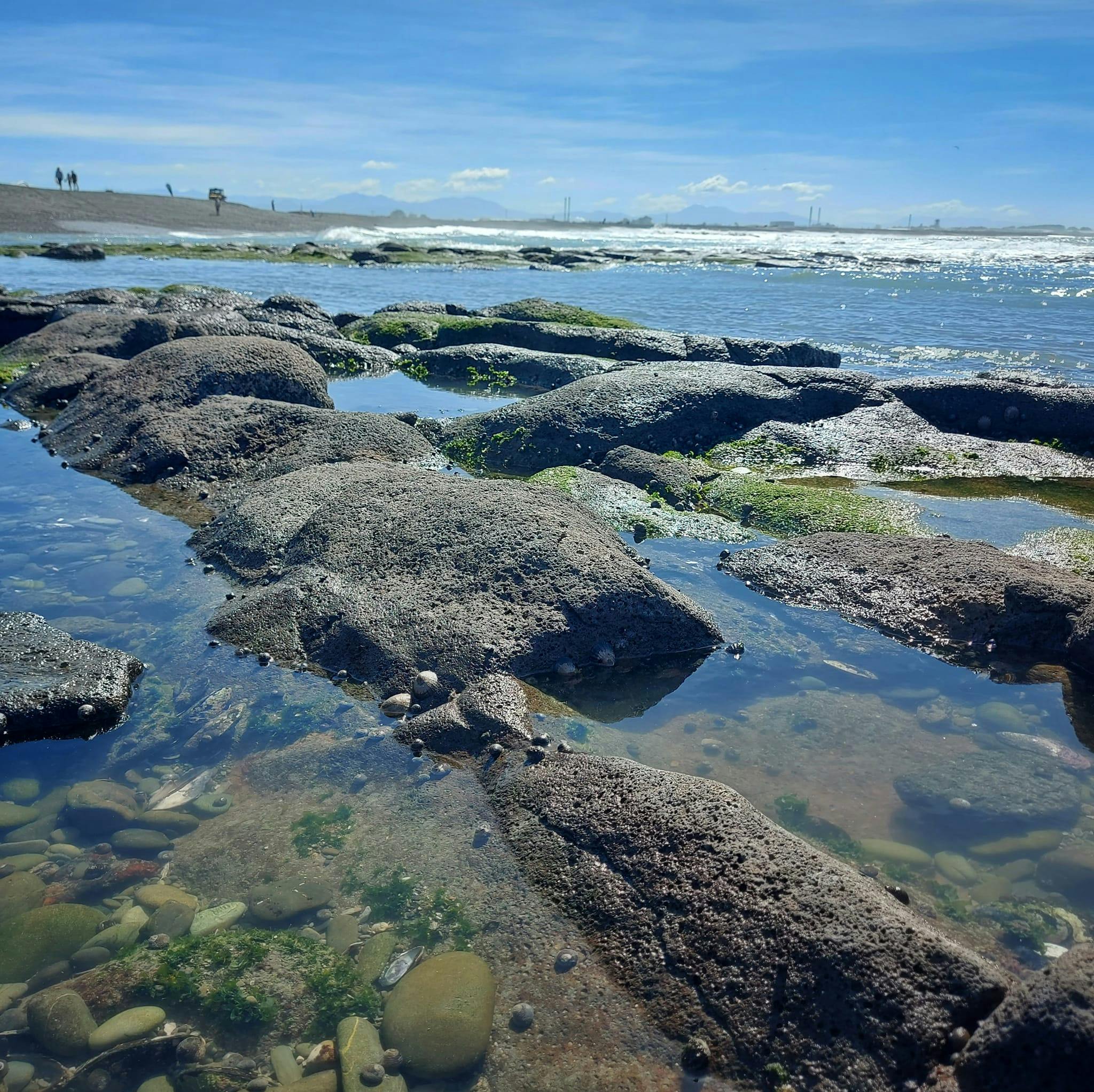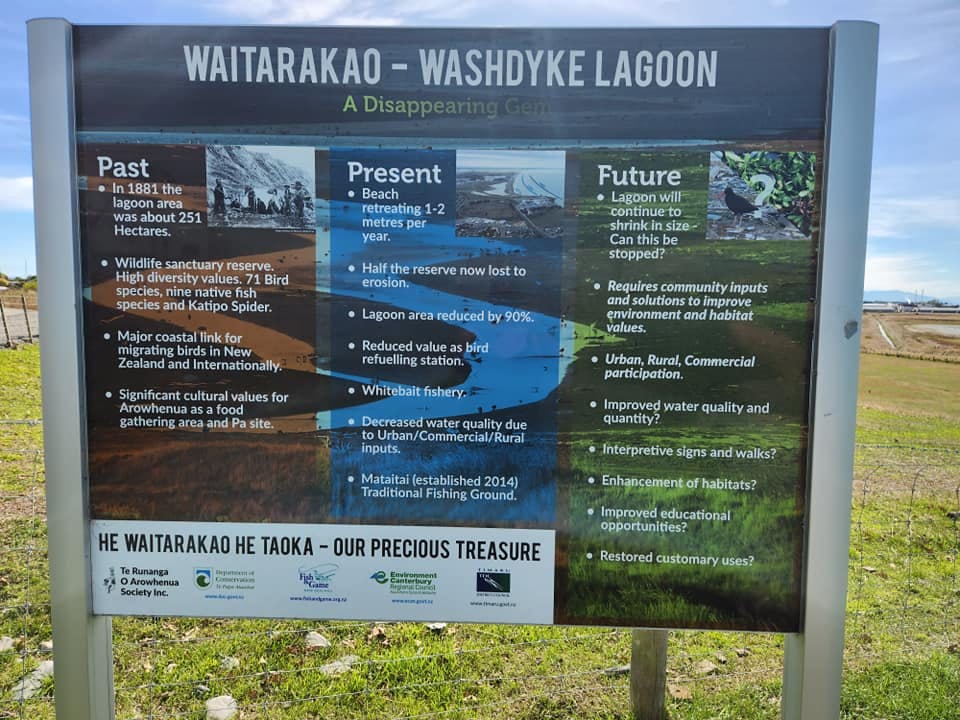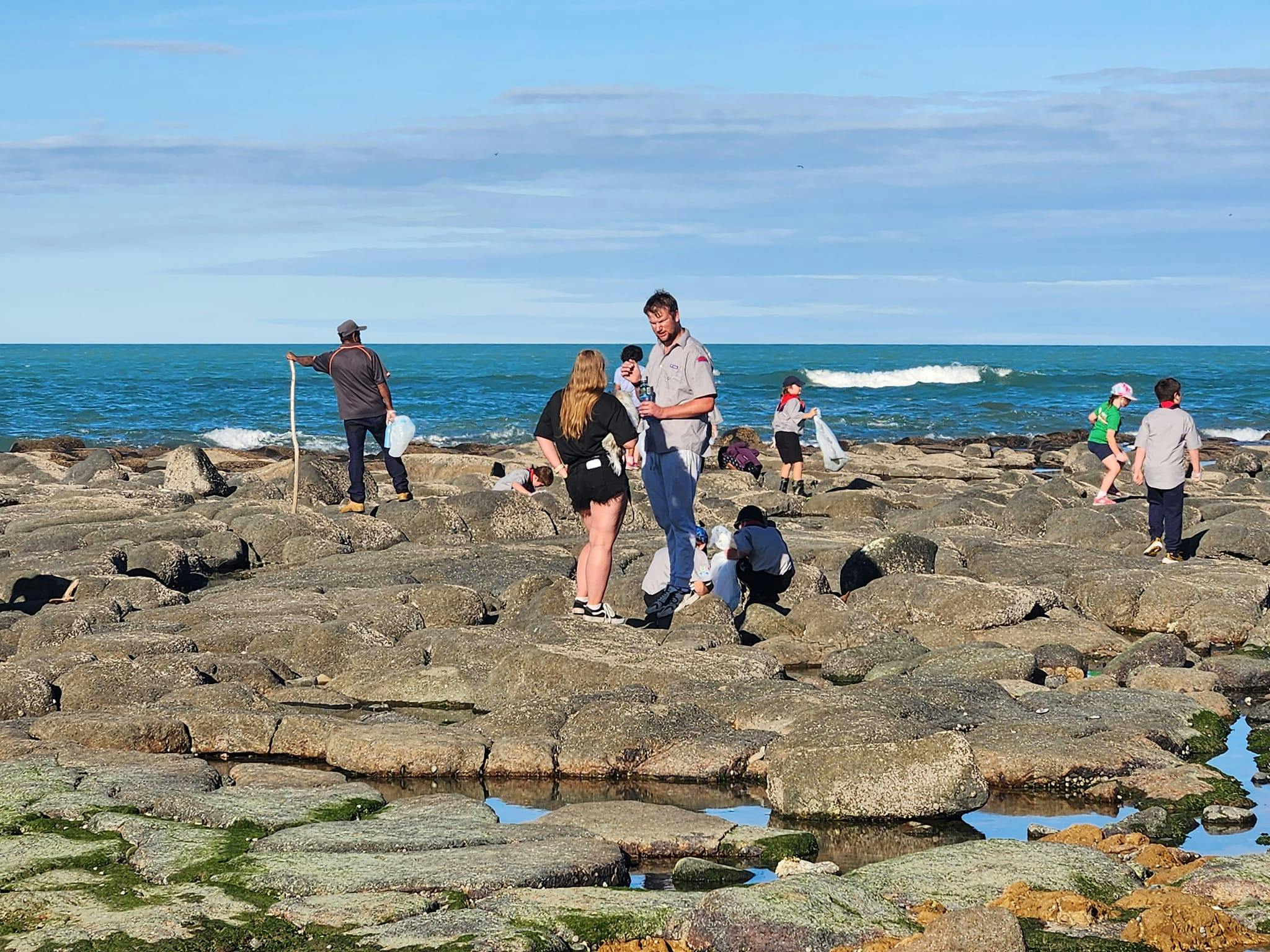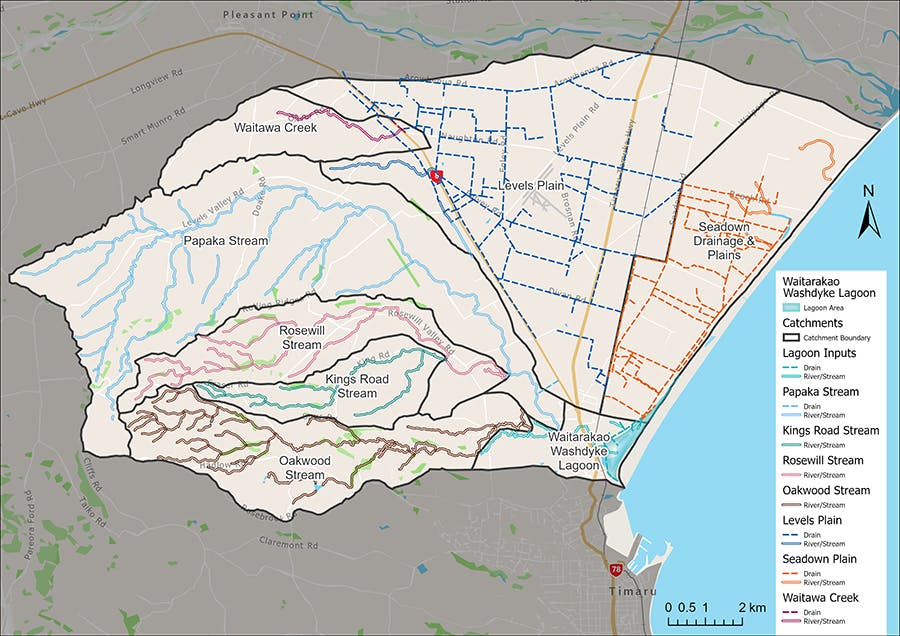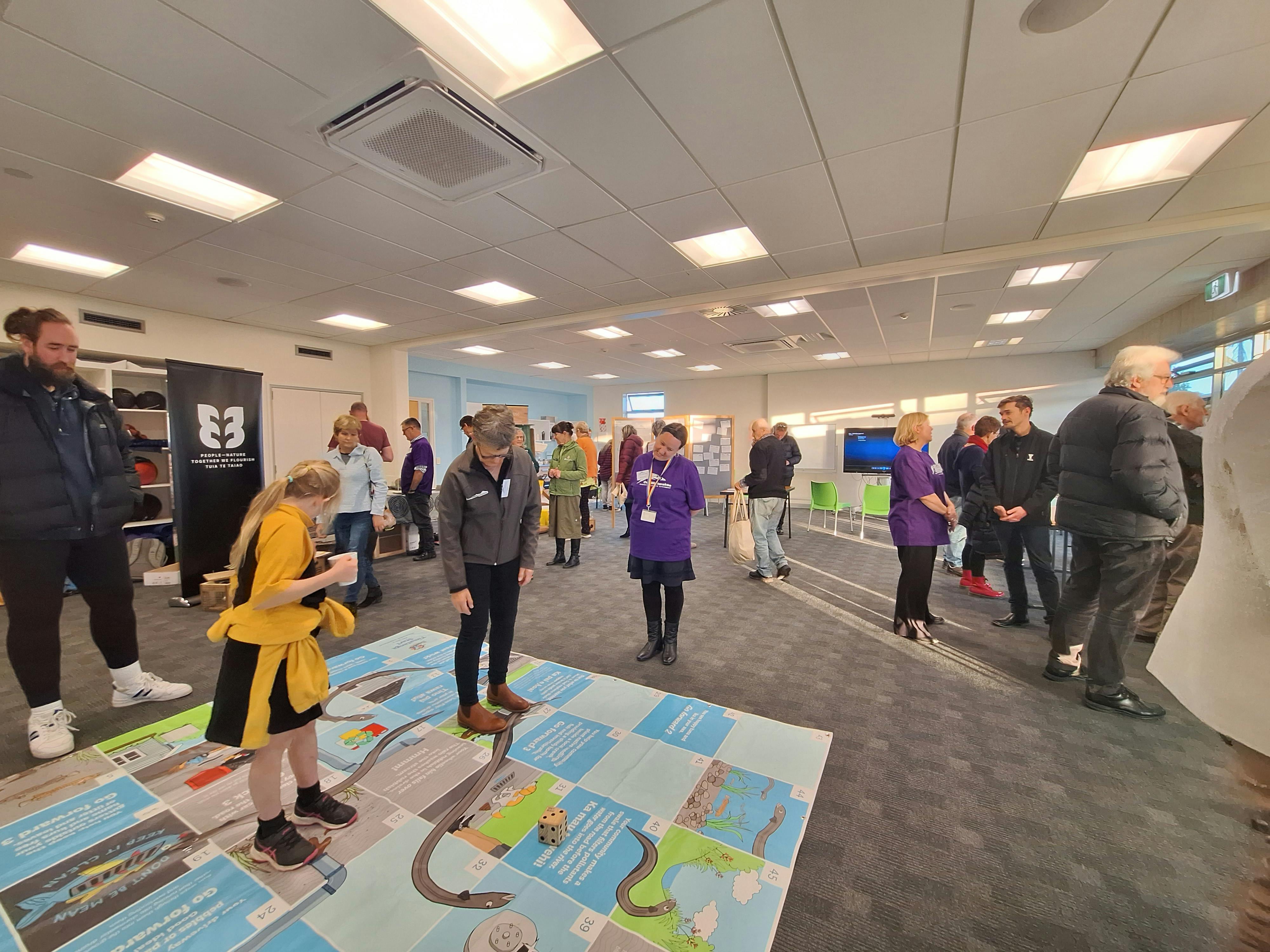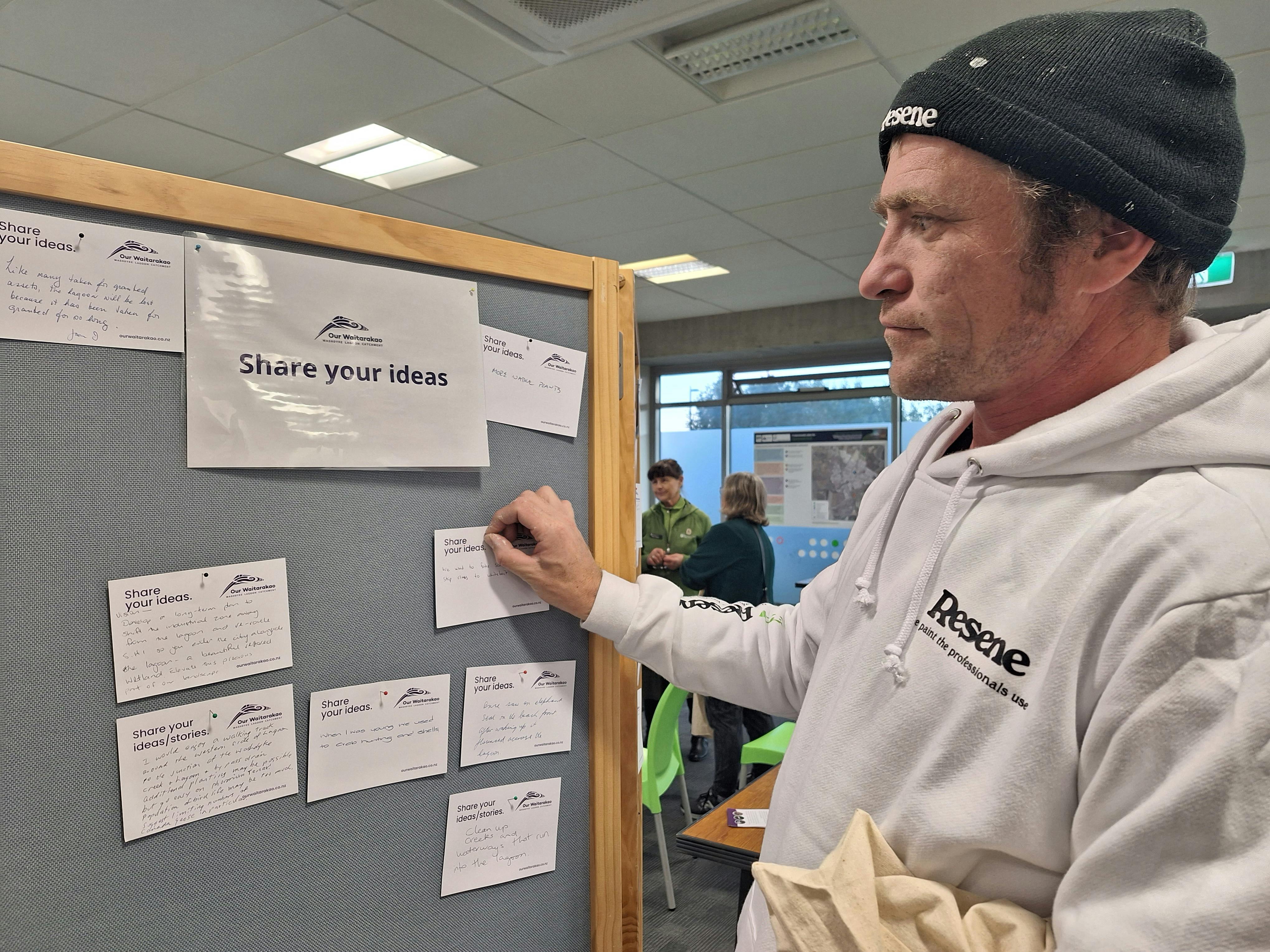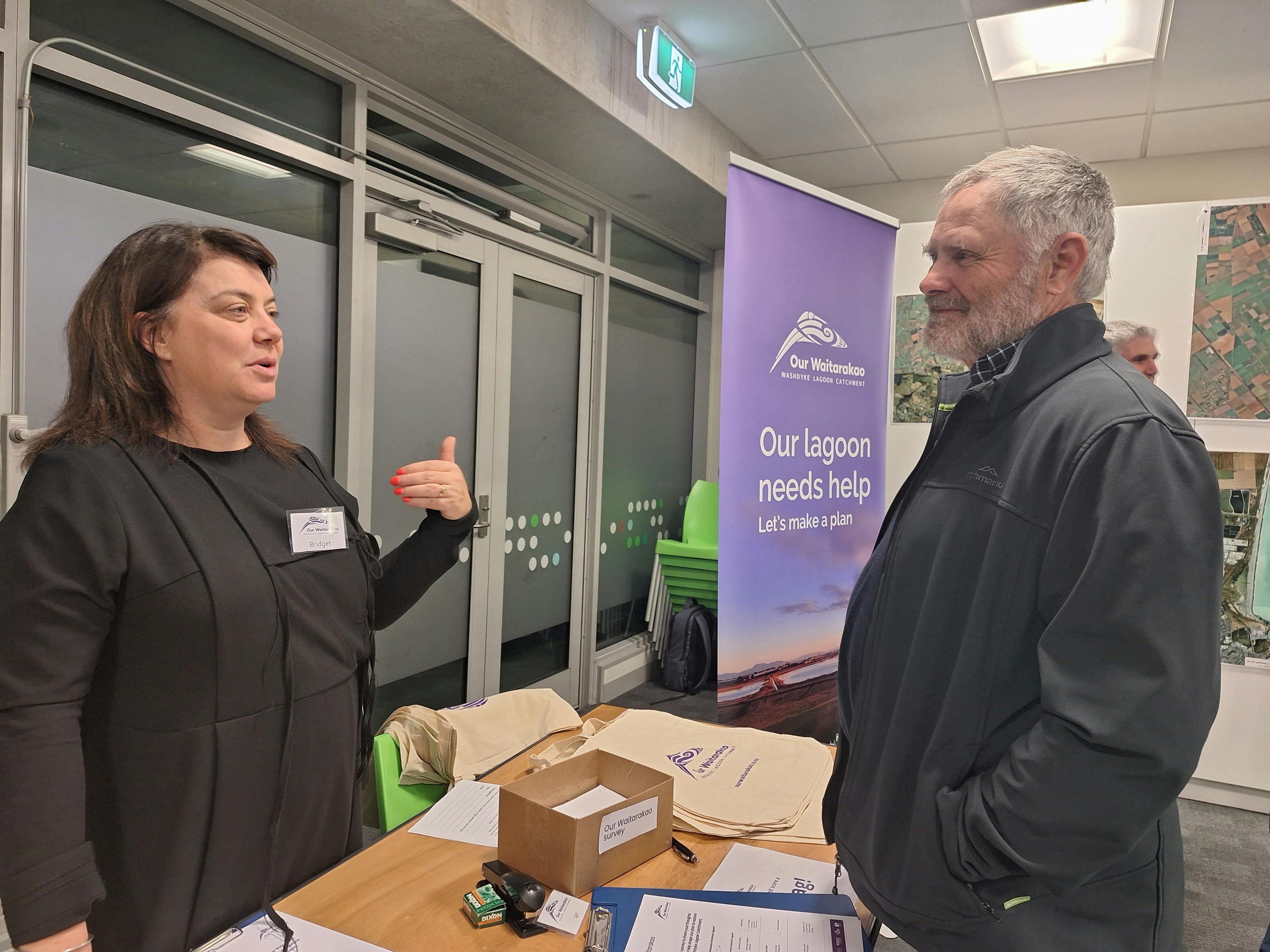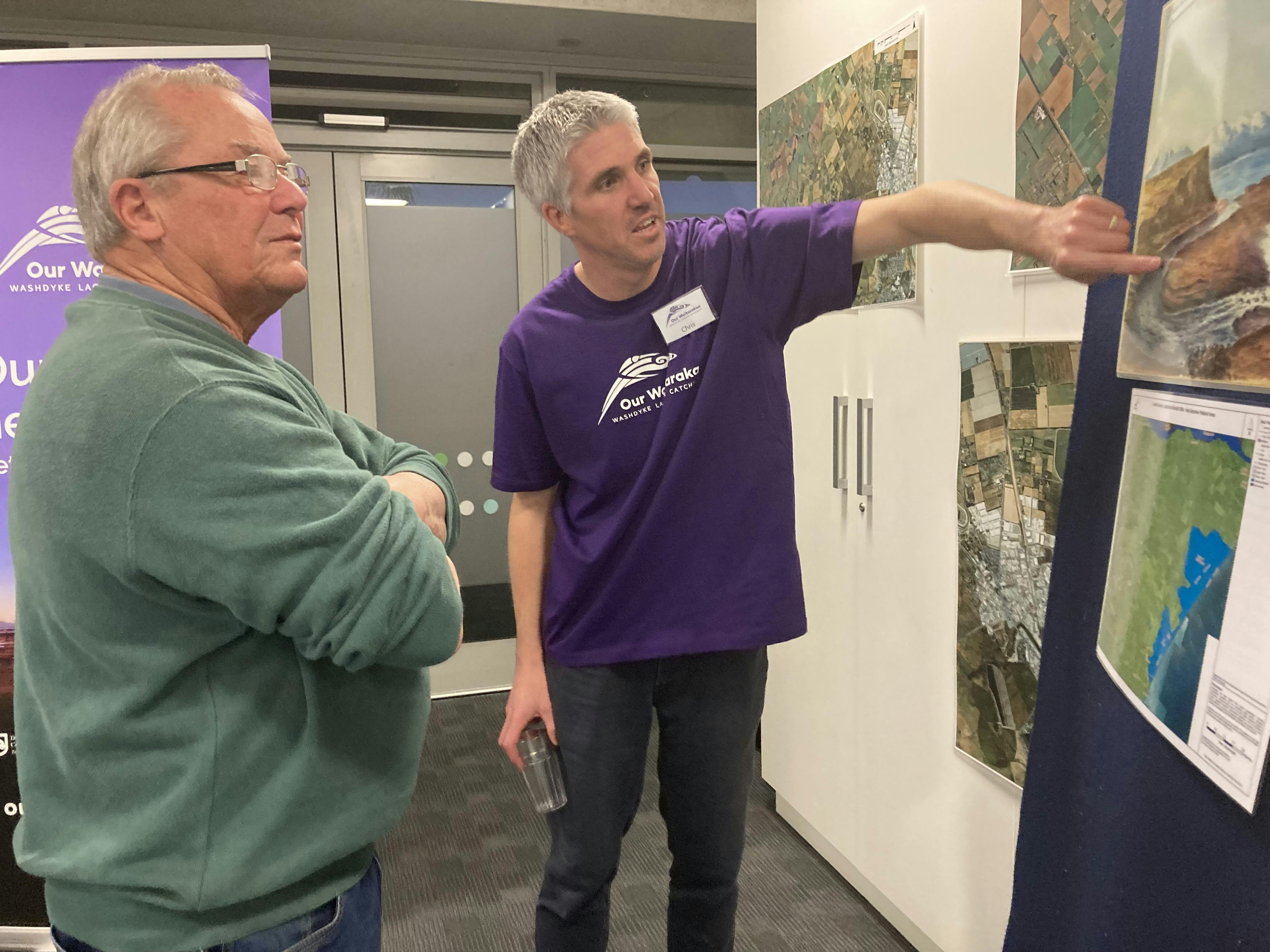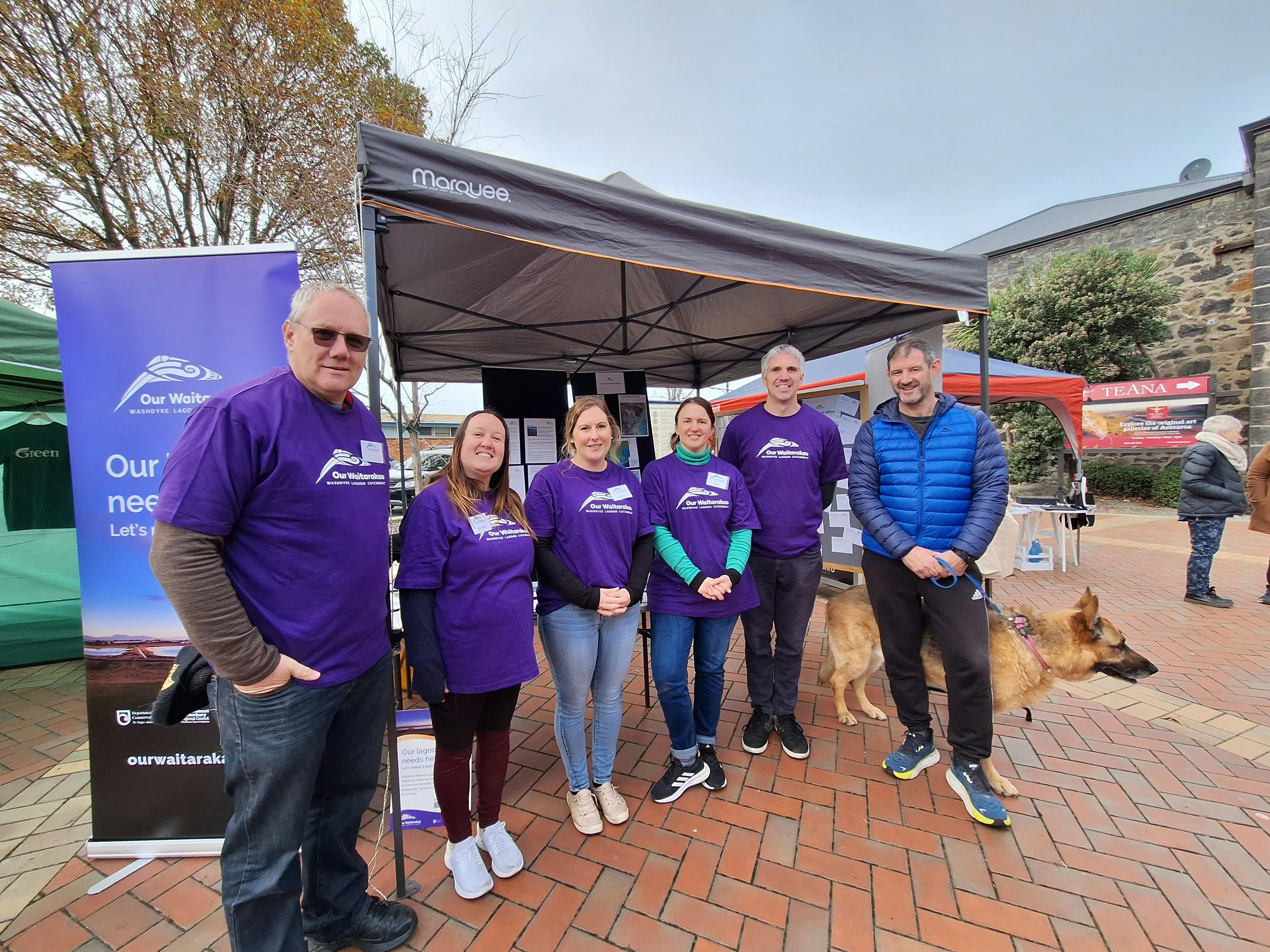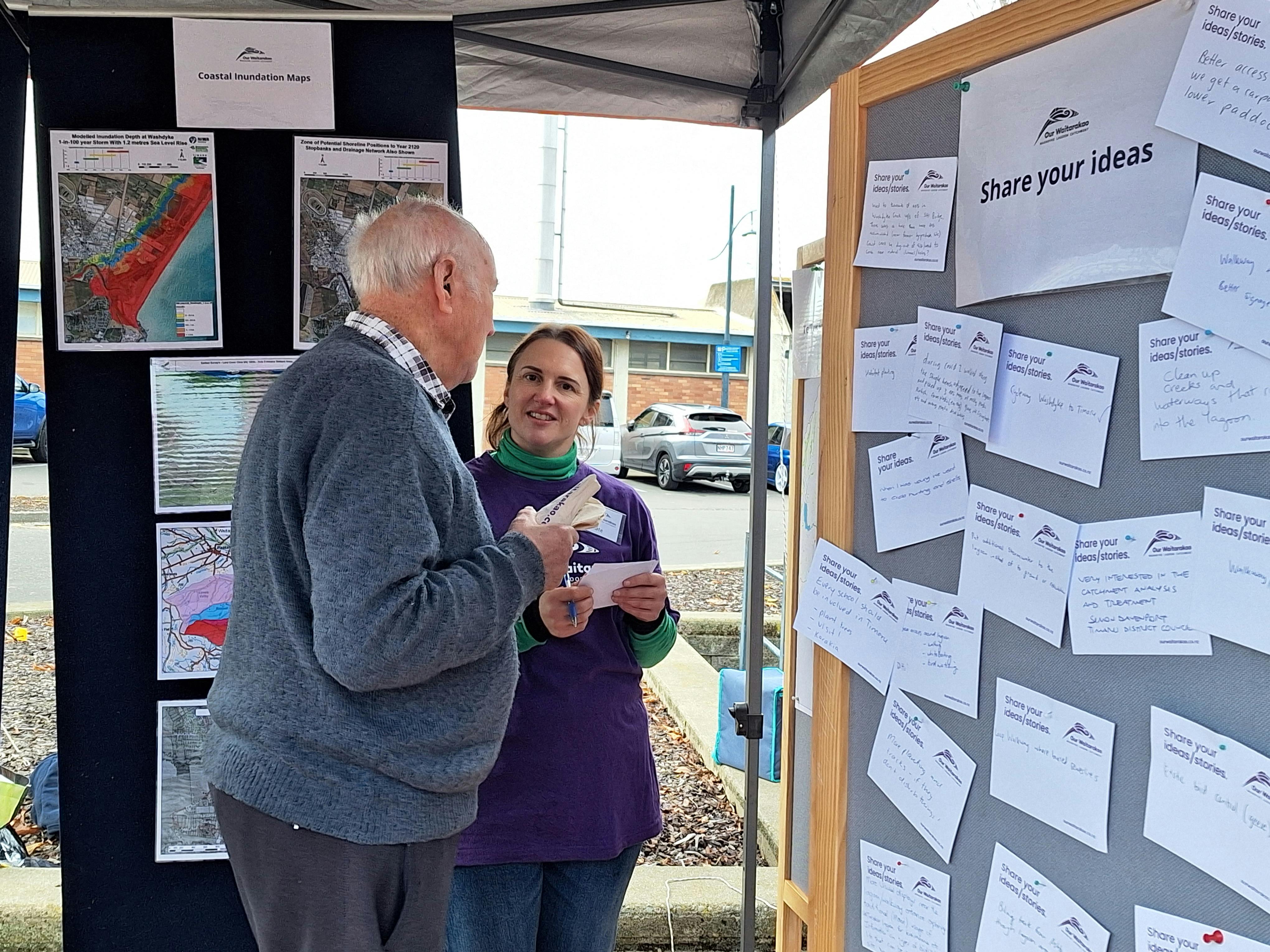Our Waitarakao Community feedback 2023
Consultation has concluded
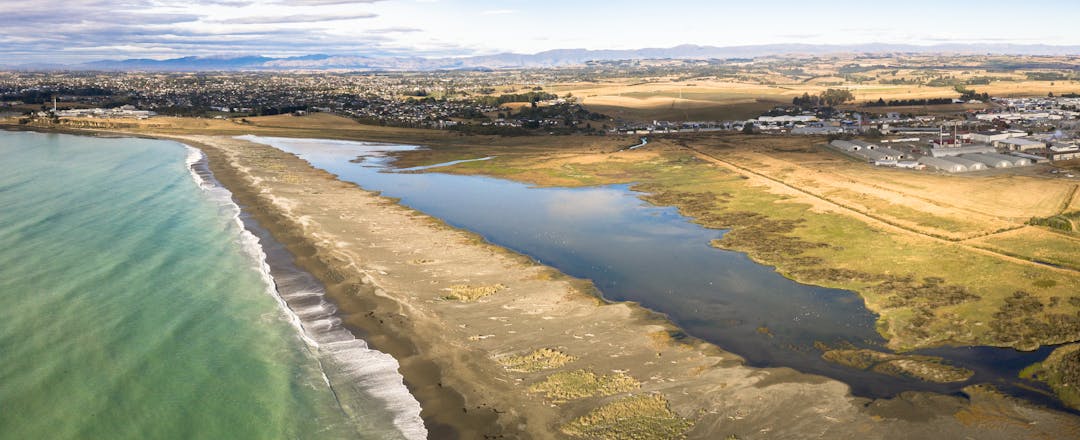
Our lagoon needs help. Let's make a plan.
Waitarakao Washdyke Lagoon is a special place for wildlife and mahika kai food gathering, but now it's in decline and the habitat for plants and animals has degraded.
Department of Conservation, Environment Canterbury, Te Rūnanga o Arowhenua and Timaru District Council have joined together to make a plan to restore the health of the lagoon and its wider catchment – and we want your help to make sure we get it right.
Why a plan is needed
Waitarakao Washdyke Lagoon is a significant wildlife sanctuary and a special place for mana whenua, local people and visitors from all around the country.
It was once an abundant mahika kai food gathering hub for local mana whenua and visiting iwi from all over the South Island Te Waipounamu. Tuna (eel), kanakana (lamprey) and all sorts of fish and shellfish were plentiful.
In recent decades however, the lagoon has shrunk and its health and the habitat of the wildlife is declining. Coastal flooding and erosion, and the impacts of climate change, are a risk to the lagoon and to property, farmland and industry in the wider catchment area.
Improving the mauri (life force) of the lagoon will take cooperation across many agencies, organisations, groups and stakeholders. That's why we want the whole community to get involved in creating a strategy to plan for the future of this special place.
How to get involved
To get involved, sign up for future updates (click 'Stay Informed') as we develop Our Waitarakao Washdyke Lagoon Catchment strategy.
Our lagoon needs help. Let's make a plan.
Waitarakao Washdyke Lagoon is a special place for wildlife and mahika kai food gathering, but now it's in decline and the habitat for plants and animals has degraded.
Department of Conservation, Environment Canterbury, Te Rūnanga o Arowhenua and Timaru District Council have joined together to make a plan to restore the health of the lagoon and its wider catchment – and we want your help to make sure we get it right.
Why a plan is needed
Waitarakao Washdyke Lagoon is a significant wildlife sanctuary and a special place for mana whenua, local people and visitors from all around the country.
It was once an abundant mahika kai food gathering hub for local mana whenua and visiting iwi from all over the South Island Te Waipounamu. Tuna (eel), kanakana (lamprey) and all sorts of fish and shellfish were plentiful.
In recent decades however, the lagoon has shrunk and its health and the habitat of the wildlife is declining. Coastal flooding and erosion, and the impacts of climate change, are a risk to the lagoon and to property, farmland and industry in the wider catchment area.
Improving the mauri (life force) of the lagoon will take cooperation across many agencies, organisations, groups and stakeholders. That's why we want the whole community to get involved in creating a strategy to plan for the future of this special place.
How to get involved
To get involved, sign up for future updates (click 'Stay Informed') as we develop Our Waitarakao Washdyke Lagoon Catchment strategy.
-
Flooding and erosion
 Natural hazards like flooding and erosion negatively impact humans, animals, and the environment.
Natural hazards like flooding and erosion negatively impact humans, animals, and the environment.For Waitarakao, the key natural hazards are coastal erosion, seawater flooding and freshwater flooding. These all have a big effect on the catchment.
Coastal stopbank
An approximately 7 km-long coastal stopbank runs parallel to the coast from the northern margins of the lagoon to Beach Road. It was built in the mid-1980s, after an earlier version was compromised by coastal erosion.
The stopbank is managed by Environment Canterbury on behalf of a small rating district made up of farm owners to the north of the lagoon, and mostly eastward of Seadown Road. Those in the rating district also contribute to the maintenance of the drainage scheme and management of the piped outlet to sea, at the southern end of the lagoon.
The stopbank protects the land behind from seawater flooding and also protects the Seadown Drainage Scheme – the main drainage channel which runs parallel to the stopbank.
Caption: A 7 kilometre-long stopbank protects the Seadown Drainage Scheme and farmland behind
The stopbank does not protect against erosion and it can't stand up to ongoing and direct wave action. Erosion is now beginning to encroach on this stopbank to the extent that it's reaching the end of its lifespan, and risks being breached.
 Caption: Erosion is bringing the sea closer, making it easier for damaging waves to reach the stopbank
Caption: Erosion is bringing the sea closer, making it easier for damaging waves to reach the stopbank Because the Seadown Drain is located immediately landward of the stopbank, the fate of the stopbank and drain are linked - if one is moved or changed, the other must be moved also.
Coastal erosion
The coastline in this catchment is eroding at an average rate between around 1.7m to 2m per year. There can be periods of slow erosion, followed by shorter bursts of significant erosion during and after a storm.
The coast has been eroding throughout recent history, but the rate accelerated significantly after the first Timaru Port breakwater was built in the 1870s. The breakwaters restricted the movement of sediment from the south – starving the Waitarakao/Washdyke beach of gravel.

Caption: Blue lines showing past shoreline positions indicate the extent of erosion of this coastline
Erosion has caused the Waitarakao Washdyke lagoon area to reduce by about 90 percent. As the lagoon continues to shrink, its ability to act as a buffer against natural hazards - and as a healthy environment and habitat for wildlife - will be further compromised.
The effect of erosion and the shrinking of the lagoon is exacerbated by land use and development, which prevents the lagoon from expanding inland or to the north. Old North Road was named as such because it was historically used as the main north road for Timaru, in part because the current State Highway One would be inundated regularly by the lagoon.
To the north of the lagoon, erosion primarily impacts on farmland, with the historic response being the periodic retreat of the coastal stopbank and drainage infrastructure (and associated loss of private land).
Seawater flooding
The lagoon has some capacity to absorb seawater that overtops the beach barrier into this area. The coastal stopbank north of the lagoon also provides some protection against the risk of seawater flooding.
However, coastal defences (both natural and built) can only handle so much, and in large storms there is a risk of significant seawater flooding into the Washdyke industrial area and onto farmland to the north of the lagoon.
Ongoing coastal erosion continues to put pressure on, and will eventually compromise, the coastal stopbank, while also shrinking the capacity of Waitarakao Lagoon.
Sea level rise will increase the potential frequency, depth, and extent of seawater flooding in the area.
Decisions need to be made around the use of, functionality, and location of potential coastal defences.
Ōpihi River flooding
In extreme flood events in the Ōpihi River, it is expected that deep breakout flows will travel into the coastal stopbank then run parallel to the coastline, through coastal farmland, past the Washdyke industrial area and into Waitarakao Lagoon.
There is currently enough space between the existing coastal stopbank and most built development for this water to reach the lagoon without flooding the Washdyke industrial area, though farmland will be significantly flooded.
However, as the coastline and coastal stopbank retreat, and development remains fixed in place, the space for the water to reach the lagoon will reduce. The ongoing shrinking of the lagoon also reduces its capacity to absorb such flooding without affecting surrounding development. For these reasons, it is likely the Washdyke industrial area will become at direct risk of flooding from the Ōpihi River in future.
-
Climate change

Our climate is changing, and more extreme weather and sea level rise will impact the ability to effectively drain the Waitarakao Washdyke catchment long-term.
Higher mean air temperatures are likely to raise the water temperature of waterbodies within the catchment. Climate change projections indicate an increase in rainfall intensity in the area, which will increase the occurrence of flooding and stormwater runoff. This will lead to additional inputs of nutrients, contaminants and sediment to the waterbodies. Higher water temperatures will increase the risk to native freshwater diversity as some species are sensitive to temperature increases. Warmer water temperatures could further alter water quality by contributing to algal blooms.
The coastline of Washdyke Waitarakao is eroding and sea level rise is projected to increase coastal erosion rates.
Coastal erosion will squeeze and degrade coastal and wetland habitats where geographical constraints or existing land use don’t allow a natural landward migration of coastal habitats. Sea level rise will also increase the frequency and size of coastal storm flooding, increasing the flood risk to built environments, productive land and coastal wetland habitats.
More coastal flooding will lead to increasing salinity stress to coastal wetlands. Many species of invertebrates, some species of plants, and fish species are specifically adapted to coastal wetland conditions and cannot tolerate large changes in salinity. This could result in a loss of biodiversity and/or changes to the composition of wetland species.
-
Learning, recreation and access

Recreational uses of the catchment are varied and include walking, beach access, fishing, bird-watching, and educational visits. The basalt reef can be explored at low tide.
The lagoon environment however is not well sign-posted or accessible, and clarity around appropriate uses of the space may be needed.
-
How you can get involved

A key part of creating the strategy is gaining important knowledge and input from the community.
We want to hear your experiences of Washdyke Waitarakao Lagoon Catchment – past and present – and understand what’s important to you for its future.
There are lots of ways you can get involved.
Join the e-newsletter
- Register (add you email address and create a password) and then click on ‘Stay Informed’ to receive updates through our e-newsletter
Request a meeting
- Call Environment Canterbury customer services on 0800 324 636 to give your details or email waitarakao@ecan.govt.nz and we’ll be in touch to set something up
Community workshops
- We are in the process of holding our community workshops to discuss more detailed ideas and options that could be part of the strategy.
We hope you’ll take part in creating the plan to restore Waitarakao Washdyke Lagoon Catchment.
-
Waitarakao Washdyke Lagoon Catchment map

 Waitarakao Washdyke Lagoon Catchment
Waitarakao Washdyke Lagoon Catchment
Timeline and key dates
-
Early community feedback
Our Waitarakao Community feedback 2023 has finished this stageWe are at the start of making a plan to restore Waitarakao Lagoon Catchment. Please complete the community survey and share your knowledge and stories.
-
Options and ideas - October/November 2023
Our Waitarakao Community feedback 2023 has finished this stageWe are discussing different options and ideas that could be included in the draft plan. We will bring some ideas to the table and get your input before we draft the plan.
-
Draft plan - mid 2024 (current stage)
Our Waitarakao Community feedback 2023 is currently at this stageWe will share the draft plan for the restoration of the Waitarakao Washdyke Lagoon Catchment with the community for feedback.
-
Final plan - 2024
this is an upcoming stage for Our Waitarakao Community feedback 2023The final plan will be shared here. This may include recommendations for future action and next steps for how the strategy should be implemented.
Videos
-
 Click here to play video
Wrapping up a busy year
A recent series of workshops completed the key activities for 2023.
Click here to play video
Wrapping up a busy year
A recent series of workshops completed the key activities for 2023.
-
 Click here to play video
Summary of Phase One engagement strategy
A summary of information, ideas and stories, shared by the community.
Click here to play video
Summary of Phase One engagement strategy
A summary of information, ideas and stories, shared by the community.
-
Click here to play video This Timaru local came across an interesting creature at Waitarakao Lagoon
-
Click here to play video South Canterbury Eco Centre - Waitarakao display Alice from Eco Centre talks us through their Waitarakao display
-
 Click here to play video
Waitarakao Lagoon exhibition tour with Keely Kroening from South Canterbury Museum
Keely guided us through the recently showcased Waitarakao Lagoon exhibition
Click here to play video
Waitarakao Lagoon exhibition tour with Keely Kroening from South Canterbury Museum
Keely guided us through the recently showcased Waitarakao Lagoon exhibition
-
Click here to play video The Breeze interview with Chris Fauth - Our Waitarakao Project Lead
-
 Click here to play video
Planting day at O'Kane family farm in the Waitarakao/Washdyke Catchment.
FMG Young Farmer of the Year contestants help out at a planting day in the Waitarakao/Washdyke Catchment
Click here to play video
Planting day at O'Kane family farm in the Waitarakao/Washdyke Catchment.
FMG Young Farmer of the Year contestants help out at a planting day in the Waitarakao/Washdyke Catchment
-
 Click here to play video
Waitarakao Washdyke Lagoon – key features and issues
Click here to play video
Waitarakao Washdyke Lagoon – key features and issues


